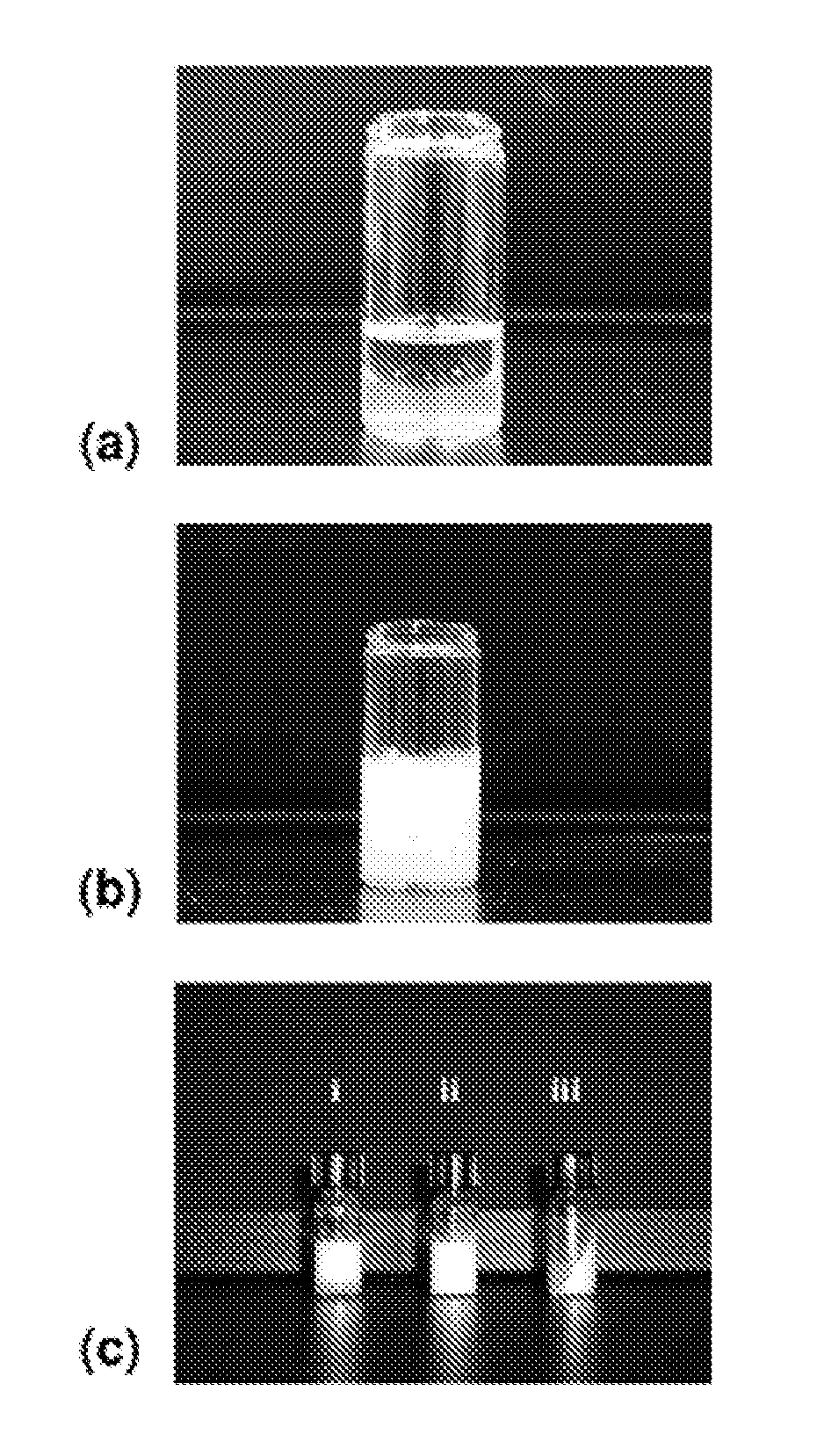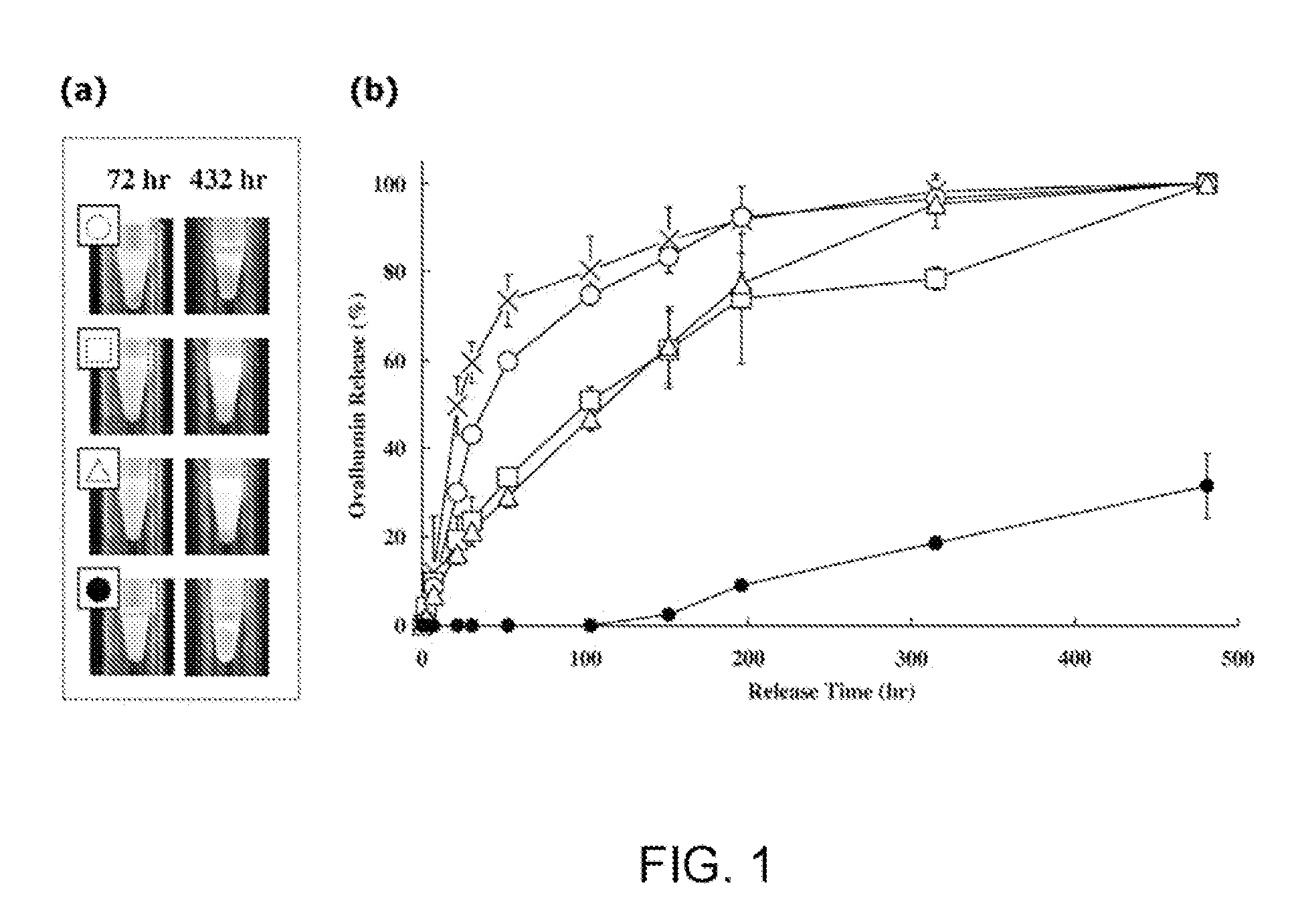Multi-phase emulsions based on amphiphilic block copolymers
a technology of amphiphilic block and copolymer, which is applied in the field of multi-phase emulsion formulations, can solve the problems of limiting human application, difficult injection, and attack of cell walls
- Summary
- Abstract
- Description
- Claims
- Application Information
AI Technical Summary
Problems solved by technology
Method used
Image
Examples
example 1
[0103]This example illustrates the incorporation of hydrophilic polymeric emulsifiers, namely, poly(ethylene glycol)-block-polylactide (PEG-b-PLA), poly(ethylene glycol)-block-poly(ε-caprolactone) (PEG-b-PCL), and poly(ethylene glycol)-block-poly(lactide-co-ε-caprolactone) (PEG-b-PLACL) in the antigen medium to alter the water affinity of oily ISA51-adjuvanted vaccines. These amphiphilic block copolymers were selected because of their biocompatibility and bioresorbability. Various physiochemical properties of emulsions have been characterized, namely, stability, the droplet test, particle size distribution, and in vitro release of a model protein ovalbumin (OVA). Finally, a preliminary immunogenicity evaluation of OVA after formulation with the PEG-b-PLACL-stabilized ISA51 adjuvant was determined in mice for induction of antibody responses in comparison with non-formulated OVA and conventional ISA51 oily adjuvant-formulated OVA (Huang et al. (2009) “Development of Multi-Phase Emulsi...
example 2
[0125]The example here illustrates the synthesis and characterization of PEG-bearing PLA di- and tri-block copolymers, PLA-PEG and PLA-PEG-PLA, prepared by the direct polycondensation of an aqueous lactic acid solution on monomethoxy or dihydroxyl PEG. Unlike the block copolymers reported in the literature, which were prepared in the presence of cytotoxic catalyst-containing heavy metals, in this study, no catalyst was added during polymerization, which increased the confident biocompatibility in the final material. The resulting copolymers ers were characterized by MALDI-TOF MS, GPC, and 1H-NMR. In contrast to micelles or nanospheres in which the polymer provides a matrix or a vehicle to encapsulate the bioactive agents, here we wanted to demonstrate whether the amphiphilic polymer could play an auxiliary role (as a surfactant) to stabilize the oil / water interface so that the bioactive candidates could be either surface attached or encapsulated within the core oil. The emulsifying ...
example 3
[0143]This example illustrates the use of an amphiphilic polymer, namely, poly(ethylene glycol)-block-poly(lactide-co-ε-caprolactone) (PEG-b-PLACL), as an emulsification agent to render different types of vaccine formulations. The hydrophilic block was made of PEG because of its availability, water-solubility, and high biocompatibility. Degradable aliphatic polyesters, in particular polylactides (PLA) and poly(e-caprolactone) (PCL), have been widely used as medical and drug delivery devices with FDA approval. PLA with variable chain stereoregularity provides a worthwhile means to adjust the rate of degradation, in addition to its physical and mechanical properties. The degradation products of PCL have a relatively higher pKa than those of poly(lactide-co-glycolide) (PLG) (4.8 for ε-hydroxycaproic acid, and 3.8 for lactic acid and glycolic acid at 25° C.), and they may provide more conservation of protein molecular integrity when being used for a long-term controlled delivery of prot...
PUM
| Property | Measurement | Unit |
|---|---|---|
| particle size distribution | aaaaa | aaaaa |
| diameters | aaaaa | aaaaa |
| molecular weight | aaaaa | aaaaa |
Abstract
Description
Claims
Application Information
 Login to view more
Login to view more - R&D Engineer
- R&D Manager
- IP Professional
- Industry Leading Data Capabilities
- Powerful AI technology
- Patent DNA Extraction
Browse by: Latest US Patents, China's latest patents, Technical Efficacy Thesaurus, Application Domain, Technology Topic.
© 2024 PatSnap. All rights reserved.Legal|Privacy policy|Modern Slavery Act Transparency Statement|Sitemap



